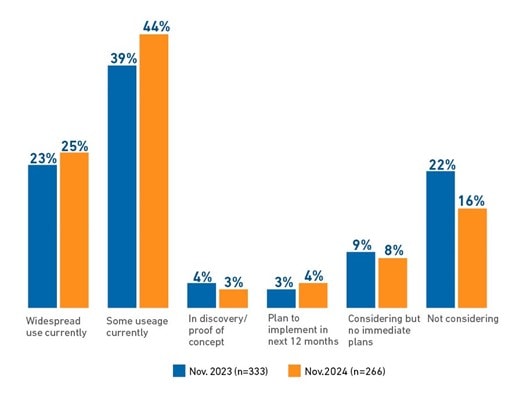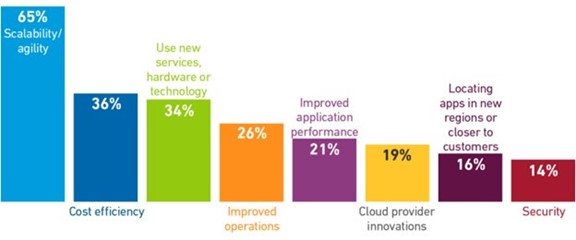The Uptime Institute's latest Capacity Trends and Cloud Survey reveals that four in five data centre owners/operators have embraced this trend, with 25% of respondents reporting widespread adoption and 44% indicating some current usage.

"Cloud offers flexibility and reliability if correctly implemented," says Dr. Owen Rogers, Uptime Institute's sr. research director for Cloud Computing. "Under the right circumstances, the cloud can also be an inexpensive option."
Moving to the public cloud

Sixty-two per cent (62%) of organisations that have adopted public cloud say they moved applications in the past 12 months from their own data centres or colocation facilities to the cloud.
Key reasons for moving to the cloud include an ongoing project to migrate several applications to the public cloud (39%), hardware reaching end-of-life (35%), and C-level instructions to pursue a cloud-first strategy (34%).
"By a wide margin, on-premises operators who move applications to public cloud say the number one benefit is scalability," says Dr. Rogers. "They are looking for greater agility for their organisation to adapt to changing demands and workloads successfully."
Benefits of cloud migration

The report underscores the significant benefits of cloud migration, with scalability (65%) emerging as the top advantage, followed by cost efficiency (36%) and the potential for new services, hardware, or technology (34%).
Cloud repatriation
"While the cloud has advantages, certain applications are better suited for on-premises or colocation environments," says Dr. Rogers. "Cost concerns and latency issues can drive businesses to bring certain applications back in-house. Bottom line, operators are choosing hybrid approaches that include cloud for some workloads and on-premises data centres for others."





